Sohei Nishino | New Works : Gallery exhibition
-

Sohei Nishino with a Journey of Drifting Ice, 2019 (original photo-collage)
-

Sohei Nishino, Mountain Lines, Everest, 2019 (installation at Michael Hoppen Gallery)
-

Sohei Nishino, Mountain Lines, Everest, 2019, 2019
-
 Sohei Nishino, Diorama Map Amsterdam, 2014
Sohei Nishino, Diorama Map Amsterdam, 2014 -
 Sohei Nishino, Diorama Map Berlin, 2012
Sohei Nishino, Diorama Map Berlin, 2012 -
 Sohei Nishino, Diorama Map Bern, 2012
Sohei Nishino, Diorama Map Bern, 2012 -
 Sohei Nishino, Diorama Map London, 2010
Sohei Nishino, Diorama Map London, 2010 -
 Sohei Nishino, Diorama Map Istanbul, 2011
Sohei Nishino, Diorama Map Istanbul, 2011
Sohei Nishino’s enduring fascination with map-making has taken a new direction in his most recent projects, which bring his cartographic vision to bear upon places which have traditionally defied definition on paper. His signature photo-collage technique pieces together thousands of images taken over the course of his travels, to construct dioramas of complex geographies which integrate human and physical landscapes. Moving beyond his earlier work in urban environments, Nishino has most recently travelled to Mount Everest, and to the sea which runs between northern Japan and eastern Russia, taking on some of the world’s most challenging environments.
Nishino’s Everest draws inspiration from the maps used traditionally by pilgrims to navigate holy sites. Fascinated by the historical significance and symbolism of Everest, Nishino shot almost 400 rolls of film during his 23 day journey from Lucla to Gokyo Peak. He relates this intense journey through the Himalayas to those undertaken by sherpas and other local people who call the mountain home. Instead of following a linear course to a fixed destination, as many of visitors to Everest do, Nishino captures his experience of the road from a dense and meticulously planned variety of vantage points. Whilst Nishino continues to explore his interest in the relationship between people and their environment, his map of Everest illustrates an intense engagement with this harsh geography, and the ways that it shapes the lives of local populations. Nishino has described this project as one of the toughest periods of shooting, and in its unprecedented scale and use of colour it stands apart from his other work to date.
To create Journey of Drifting Ice, Nishino started out from the extreme north-eastern tip of Japan, on Hokkaidō’s Shiretoko peninsular. Fascinated by the drift ice, which expands across Shiretoko’s seas, he began to research the science behind these colossal formations and the remarkable journey ice floes travel from Russia’s great Amur River through to the Sea of Okhotsk before arriving in Japanese waters. Nishino observes the drift ice as a naturally occurring transnational phenomenon, acting as a prescient appeal to our divided global society. In the light of the environmental crisis, Nishino’s mapping of these disappearing geographical features is charged with additional urgency; the landscape of these long unchartered waters is changing rapidly, and Nishino’s photography takes stock of both the ice floe’s evolving position and the integral necessity of its ecosystems to the diverse communities which rely upon them.
-
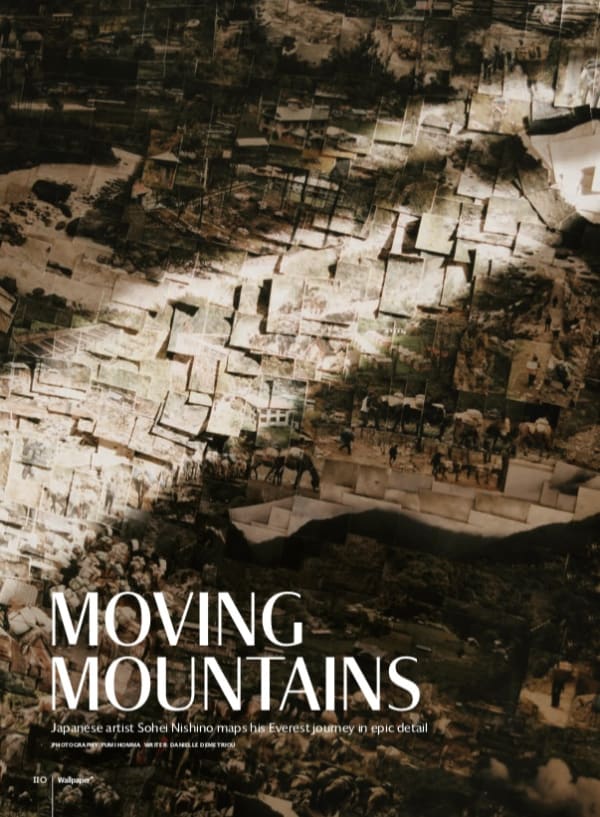
Wallpaper* - Moving Mountains
Author: Danielle Demetriou. Photography © Fumi Homma, Wallpaper*, February 12, 2020 -
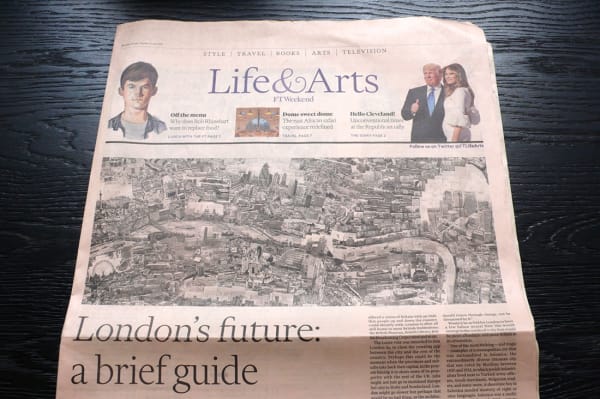
Sohei Nishino: Cover image for FT Weekend
FT Weekend, print, July 24, 2016 -
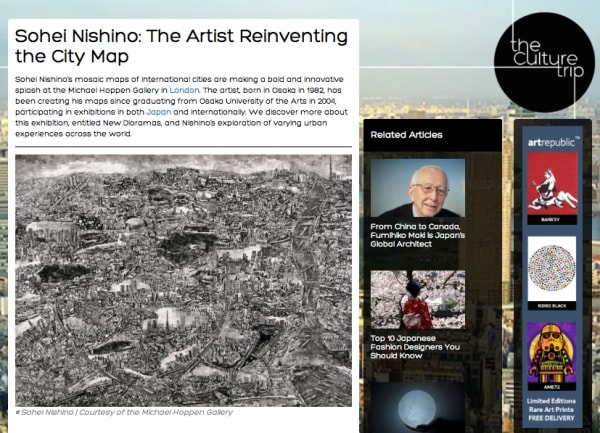
Sohei Nishino: The Artist Reinventing the City Map
Jillian Levick, The Culture Trip, December 14, 2014 -
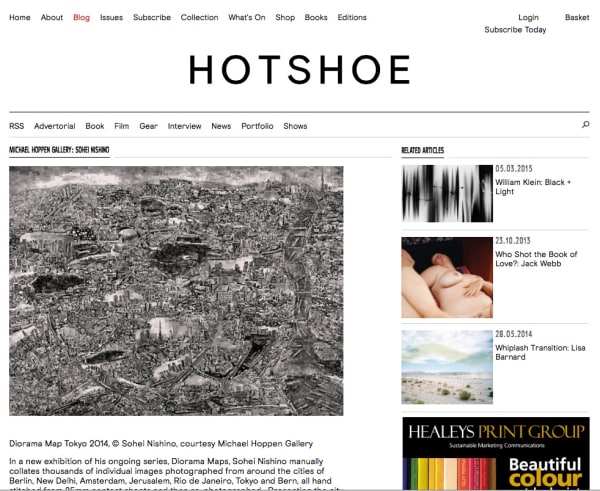
MICHAEL HOPPEN GALLERY: SOHEI NISHINO
Alan Knox, Hotshoe International Online, November 26, 2014 -
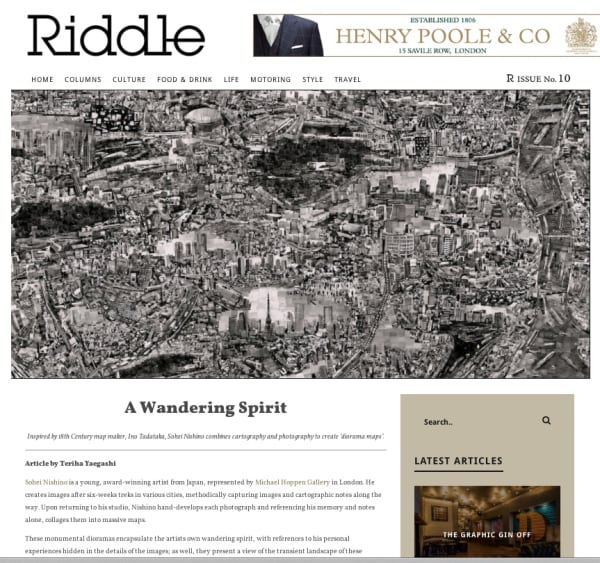
Wandering Spirit
Riddle Magazine, November 24, 2014 -
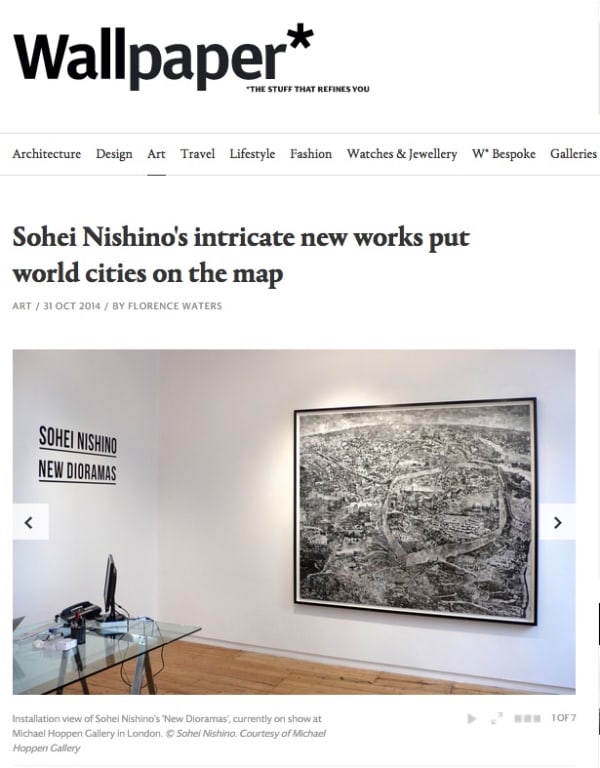
'Sohei Nishino's intricate new works put world cities on the map'
Florence Waters, Wallpaper* magazine, October 31, 2014 -
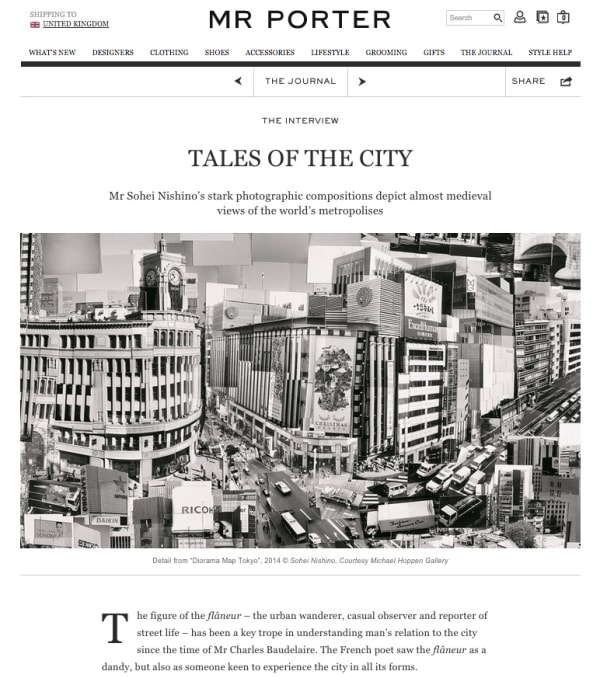
'Tales of the City'
Mr CB Liddell, Mr Porter, October 30, 2014 -
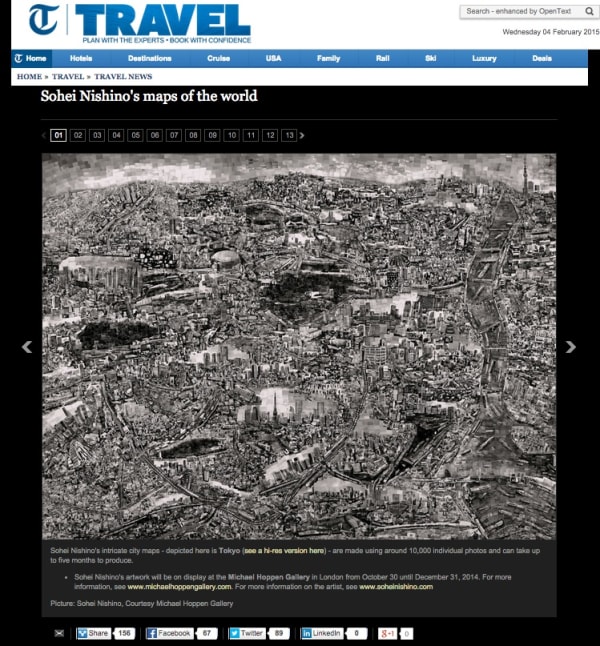
"Sohei Nishino's maps of the world"
The Telegraph, October 28, 2014 -

Sohei Nishino
TimeOut, October 27, 2014 -
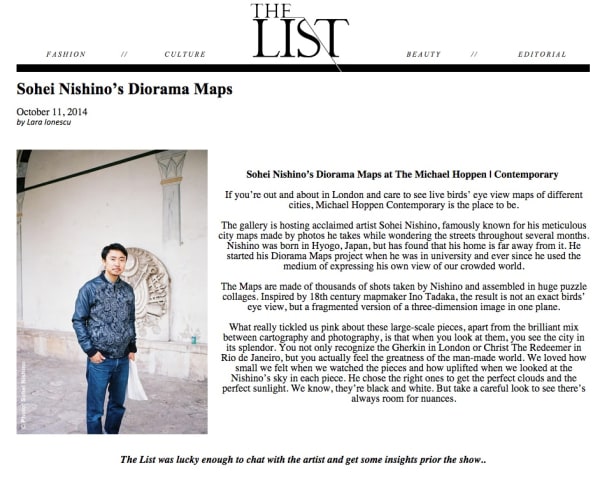
Sohei Nishino's Diorama Maps
Lara Ionescu, The List, October 11, 2014 -
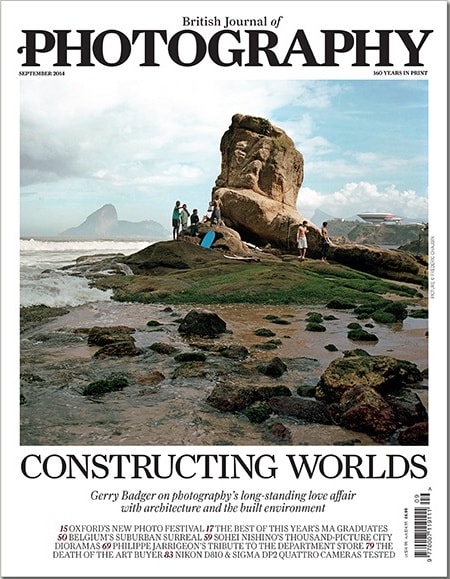
Sohei Nishino: Constructing worlds
Simon Bainbridge, BJP #7828, September 24, 2014










